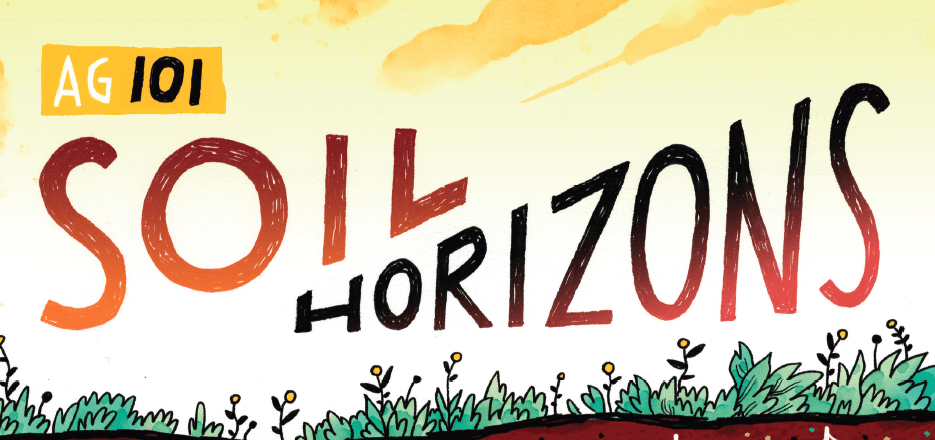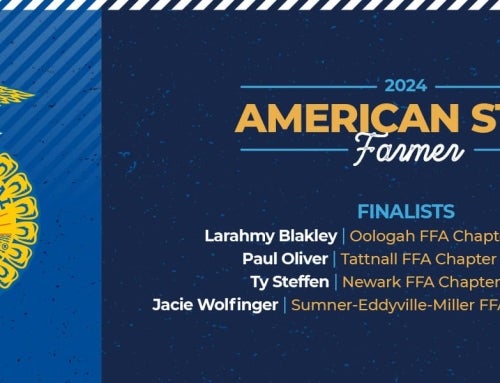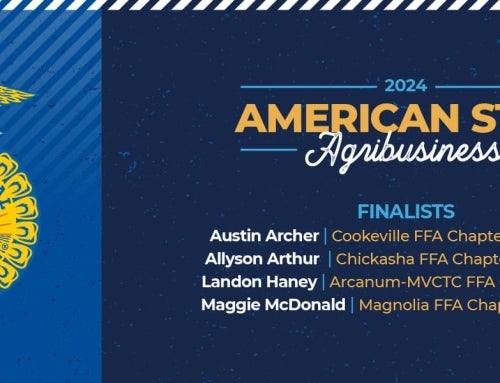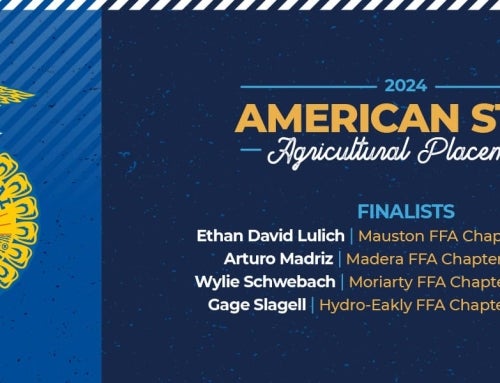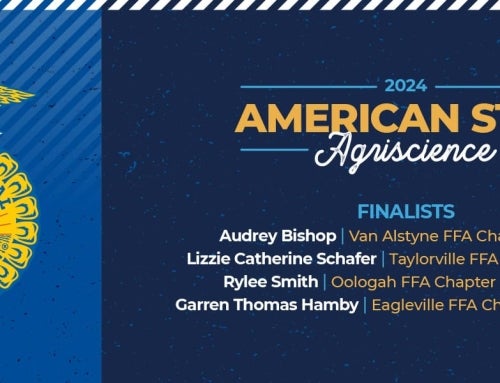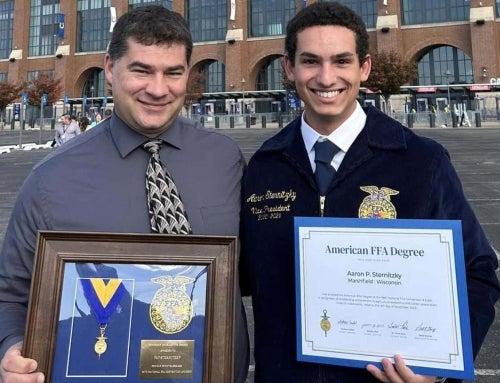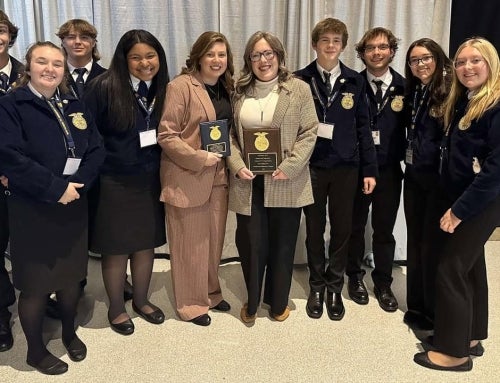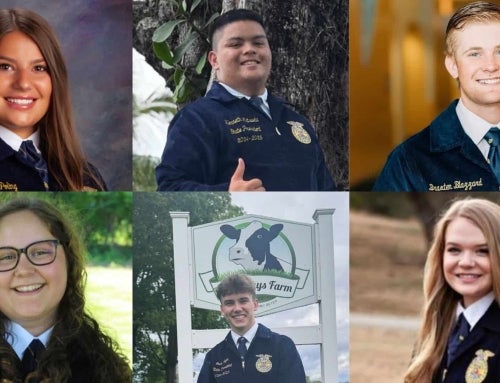Six FFA experts tell us what’s up with the layers of soil under our feet.
O Horizon
The O horizon is typically at the top of the soil structure and is made up of mostly organic matter. This organic matter is vital to the growth of crops and other plants because it holds nutrients such as carbon, phosphorus, nitrogen and sulfur. The O horizon is formed over a process of hundreds of years from organic materials that slowly decompose. The O horizon also serves to absorb water and build soil structure.
– Ryan McMurray, Moapa Valley FFA
A Horizon
Most commonly called topsoil, the A horizon is a layer of mineral soil that has a defined soil structure, and it is mostly made up of humus (decayed organic matter). The A horizon may be a result of soil disturbance by plant and animal activity. It is one of the layers we test for texture in the soils contest.
– Lacey Jones, Virgin Valley FFA
E Horizon
The E horizon is a zone of eluviation, where organic matter, clay or both have washed out of the layer, usually giving it a lighter color and making it feel ashy or chalky to the touch. The texture is generally similar to the horizon above it but lower in clay content than the horizon below. The E horizon is not present in all soil profiles and can be found on sites with a high temporary water table or forest soils.
– Lilly Cook, North Shelby FFA
B Horizon
The B horizon, or subsoil, is referred to as the zone of accumulation due to buildup of minerals leached out of the A and E horizons. This leaching process is known as illuviation. The B horizon contains more clay than the topsoil and contains lower levels of organic matter. Soil structure in this horizon is often blocky or prismatic due to the higher clay content.
– Noah Iles, Higginsville FFA
C Horizon
The C horizon is usually the deepest in the pit and the closest to bedrock. It is usually unaffected by the soil formation process and doesn’t have much layering. It is very close in structure to weathered parent material bedrock.
– Travis Buckler, Princeton FFA
R Horizon
The R horizon, also called bedrock, is the lowest layer. In some places, the R horizon might be 60 feet below the topsoil. In other places, it could be as little as 6 feet below or less. The R horizon is characterized by tightly bound, unbreakable materials, unlike the looser layers above it. The R horizon is commonly made up of sandstone, granite or limestone.
– Mackenzie Kephart, Moapa Valley FFA
Our Soil Savvy Authors
Meet our experts. These six FFA members have successfully competed in soil judging career development events (CDEs) and share their soil horizon expertise for this graphic.
Ryan McMurray is the president of the Moapa Valley FFA Chapter in Nevada. He has been on his chapter’s soil judging and homesite evaluation teams for four years and has led the teams as a CDE chair for the past three years. He has been the state high individual for both events multiple times.
Lacey Jones is a member of the Virgin Valley FFA Chapter in Mesquite, Nev. She has been on the chapter’s soil judging team and competed in the state soil judging contest for the last two years. Jones is also a member of the school’s flag football, track and cross-country teams.
Lilly Cook is the chapter reporter at North Shelby High School in Missouri. She was a member of the first-place Missouri State FFA Soils CDE team last year, and she placed second individually. Outside of FFA, Cook plays basketball and softball, and she is an active member of NHS, FCCLA and student council. Her supervised agricultural experience (SAE) is growing sweet corn.
Noah Iles of the Higginsville FFA Chapter in Missouri developed strong critical thinking and problem-solving skills through his involvement in the soil judging CDE. Many of his favorite high school memories were made traveling to soil judging competitions with friends. His success has sparked an interest in pursuing a degree in natural resources.
Travis Buckler has been a member of the Princeton FFA in Texas for three years. He raises calves with his family on their 680-acre farm, and his SAE is beef production. His favorite CDE event is soil judging, and his favorite chapter activity is the FFA Week Dodgeball Tournament.
Mackenzie Kephart currently serves as the Nevada FFA southern zone president. She has been on the winning Nevada FFA Soils CDE for two years and has attended various national FFA events and competed in livestock evaluation at the national level. Kephart will pursue a degree in livestock genetics and nutrition at Montana State University in the fall of 2020.

